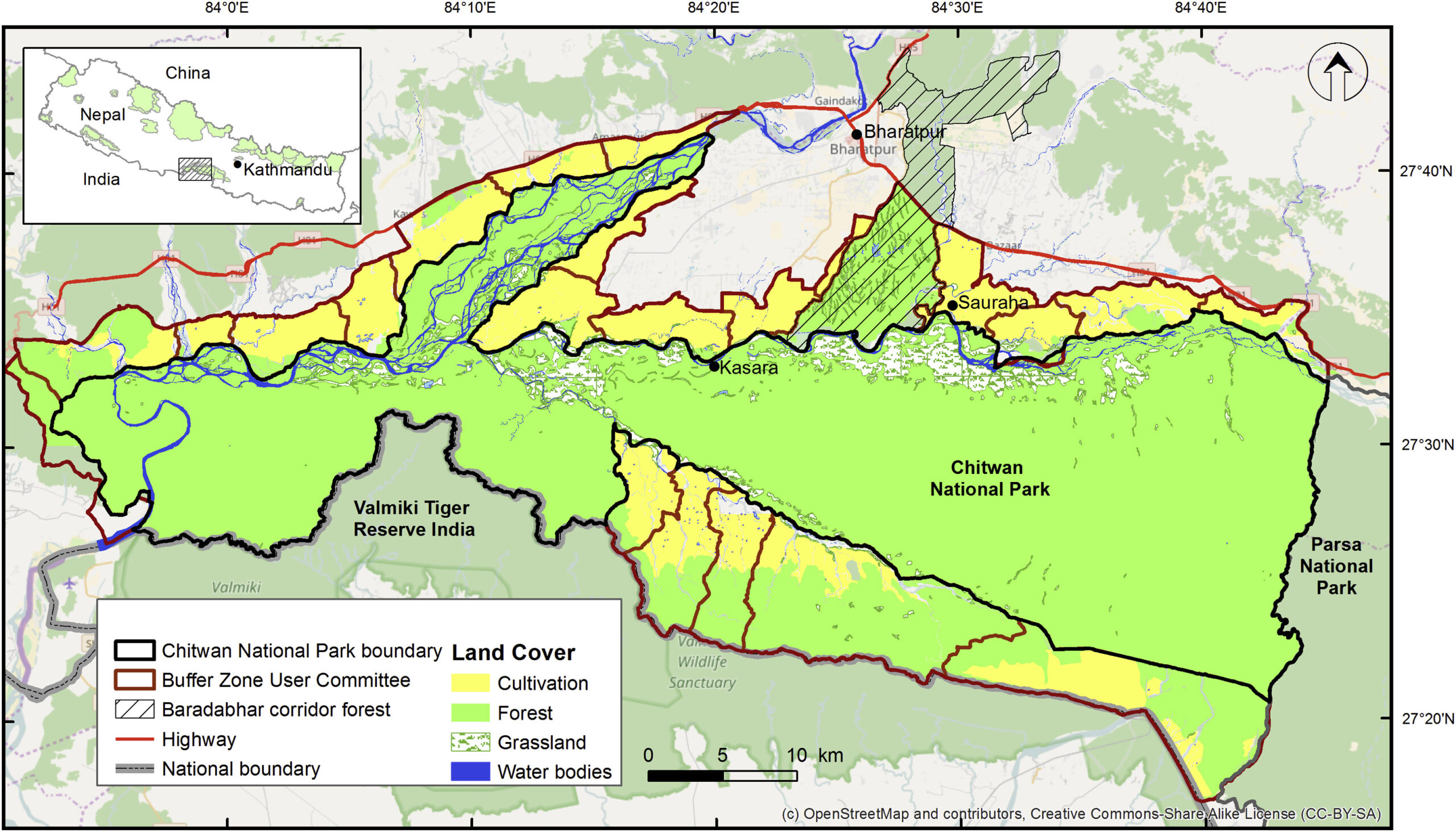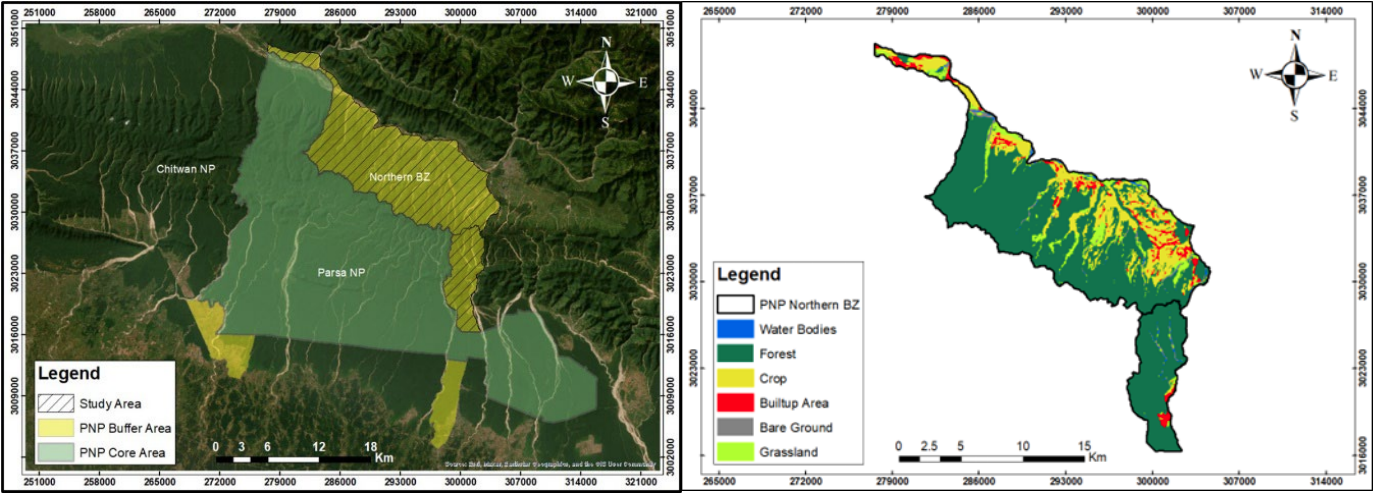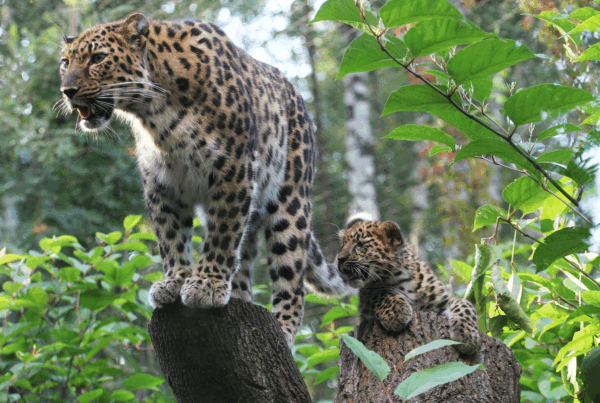
- The Terai Arc landscape, straddling the India-Nepal border, is a vital refuge for diverse wildlife, including rhinos, elephants, gaurs, and around 150 Tigers. The Chitwan-Parsa-Valmiki Complex, within this region, has been identified as a crucial territory for tiger conservation.
- ZSL Nepal, with support from WildCats, is working diligently to establish a stable tiger population in this complex through transboundary cooperation, habitat restoration, and community engagement.
- Notably, Parsa National Park, a part of the complex, has experienced remarkable improvements, including an extension of habitat, restoration of the Pasaha river, and a significant increase in the tiger population from 10 to 41, demonstrating the success of conservation efforts in restoring and protecting wildlife habitats.
Chitwan-Parsa-Valmiki Complex
The region situated at the foothills of the Himalayas, straddling the border between India and Nepal, is known as the Terai Arc landscape and is characterised by diverse habitats such as forests, floodplains, and expansive grasslands. This area serves as a refuge for various wildlife, including rhinos, elephants, gaurs, and an estimated population of 150 Tigers.
The Chitwan-Parsa-Valmiki Complex, a vast expanse of protected forested land, spans approximately 100 km along the Terai Arc landscape and has been designated as a crucial and prominent territory for tiger conservation efforts. Chitwan National Park in Nepal boasts a thriving tiger population which serves as a source for both Valmiki Tiger Reserve in India and Parsa National Park in Nepal, which have not yet reached their carrying capacity.
ZSL Nepal, with funding from WildCats, is working hard with its partners to establish a stable population of tigers in the Chitwan-Parsa-Valmiki Complex by strengthening transboundary cooperation, mitigating human-tiger conflicts, restoring and managing critical habitats, and strengthening the engagement of local communities.

Parsa National Park (PNP)
In this blog post, we will focus on the dedicated work being done in Parsa National Park, Chitwans smaller sibling. The park experienced a remarkable transformation through an extension of 128 sq. km., rejuvenation of the Pasaha River, and a substantial increase in the tiger population.

Extension area
One of the most significant transformations in Parsa National Park has been the eastward extension of the Halkhoriya area. This expansion has provided vital habitats for a wide range of growing wildlife populations, including the globally threatened royal Bengal tiger, offering them additional space to roam, breed, and establish territories. This extension has not only increased the park’s capacity to support wildlife populations but has also promoted ecological connectivity to the forest in the east and ensured the preservation of critical habitats.
Pasaha river
Another remarkable change witnessed is the transformation of Pasaha River within Parsa National Park which has revitalized the park’s water system. In 2013, the river had minimal vegetation and a small volume of water flowing through it. However, over the years, the presence of cat-tails Typha and grass-reed Phragmites has flourished along the riverbanks. This indicates the high soil moisture content creating a favorable habitat for various wildlife. The source of water seemed perennial, as suggested by the presence of moist-loving aquatic plants in the vicinity and numerous puddles even during the dry season. The revitalized river now supports a thriving ecosystem and has become part of the essential water source and feeding ground for several species of birds and mammals including the Bengal tiger. The restoration of this threatened landscape, facilitated by the Ministry of Forests and Environment/DNPWC, has not only contributed to the flourishing wildlife populations but also benefited humans while reducing human and wildlife encounters.
Growing tiger numbers
The conservation efforts in Parsa National Park have yielded a remarkable increase in the tiger population. In 2014, the park had only 10 individual tigers, but by 2022, this number had risen to an impressive 41. The increase in tigers is not only a conservation milestone but also an indication of the improving health of the ecosystem signifying sufficient prey availability and suitable habitats. The strict enforcement against poaching inside the park and community involvement in the project through increased awareness outside the park has played a pivotal role in protecting these majestic creatures. Not only has the park met the country’s commitment to double its tiger numbers but it has exceeded it by quadrupling the tiger population.
The transformation of Parsa National Park through its eastward extension, the revival of the Pasaha river, and the remarkable increase in the tiger population stands as evidence of the power of conservation efforts. These remarkable transformations also emphasize the need for continued commitment to protect and preserve this natural heritage. The park serves as a shining example of how wildlife habitats can be restored and protected through a combination of strategic planning, community involvement, and enforcement measures.
Find out more about the project here.





